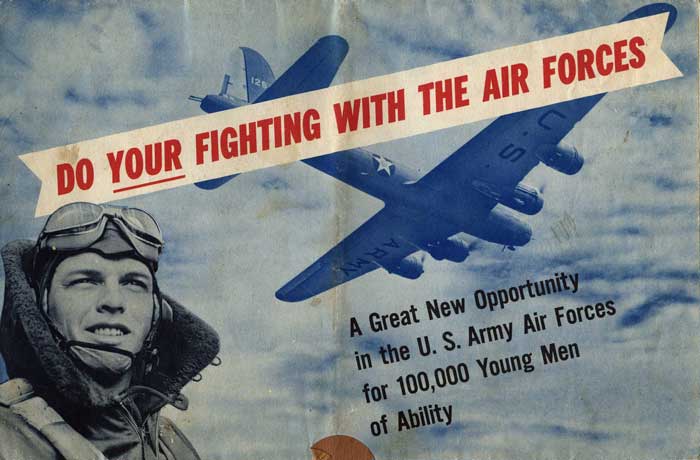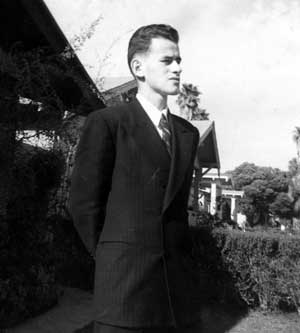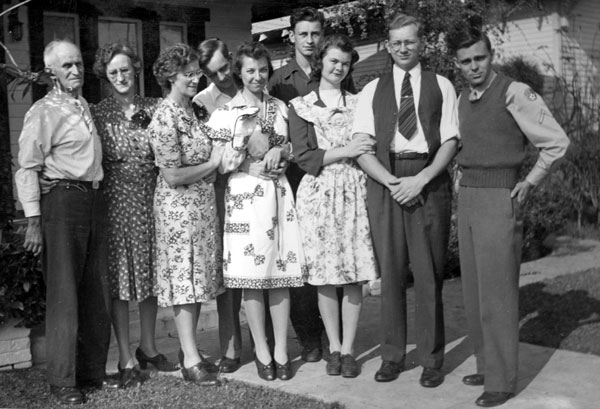

I still smile when reading the recruiting ad that led me toward the Army Air Force. It's an amusing treasure among my WW2 mementos. The ad first caught my eye as an 18 x 24-inch poster on a college bulletin board. Later, I picked up a folded copy for myself. It hit all the right buttons. There in the foreground is a young airman dressed for takeoff. In the sky is a Flying Fortress. In large red letters is "DO YOUR FIGHTING WITH THE AIR FORCES"; in black, "A Great New Opportunity in the U. S. Army Air Forces for 100,000 Young Men of Ability". (I was cocky enough to think of myself as very able in those days.) Check-marks and underlinings show that I studied the descriptions of military specialties carefully. By enlisting I could pick the AAF rather than risk a Draft Board's choice of the services.

In the spring a Big Red Car of the city's streetcar system carried me along the rails from the Pacific shore to the Air Force center in central Los Angeles. The office was swamped by young men wanting to fight in the skies for our country. A sergeant lined us up, took our names, and then to our surprise directed many volunteers to come back weeks later. Not till June was the end-of-the-alphabet group again lined up by the sergeant. We signed papers and were whizzed by a pair of Army medics who passed us all with a quick eye scan and a perfunctory tapping of chests. Even so, we were not officially sworn in until August.
Meanwhile, I continued my schooling. The math and science courses proved helpful later. Not until early 1943 did I and many college friends receive mimeographed pages notifying us to report "by order of Major General Joyce" to the Air Force Training Center in Lincoln, Nebraska for "pre-aviation cadet basic training".
 Last photo at home, March 1, 1943.
Last photo at home, March 1, 1943.
I'm wearing a pin-striped, double-breasted suit—the style of the time. My hair is short in anticipation of Army duty. Soon it was cut much shorter!
To leave California was to say goodbye to my family at 703 Boccaccio Street: Mother, Dad, and brother Donald. Also it was to say goodbye to many uncles, aunts, and cousins of the Weir clan in sunny California. Our extended family used to come together from several southland towns to socialize over platefuls of home-cooked chicken. My father and Uncles Bob and Alex had served in the army of their day and must have known better than I of what I was in for. My brothers, Bob and Don, and my cousin, Richard Gurvine, were soon to follow me into service.
 Christmas 1943
Christmas 1943
Folks I left behind at 703 Boccaccio Street: Dad, Mother, Aunt Mae (Mother's sister), Harold (a foreman at Douglas Aircraft), Harold's wife Janet, my younger brother Donald, Myrtle (wife of Clarence), Clarence (also worked at Douglas), and an airman friend of Clarence. Harold and Clarence stayed with us in 1942 because the influx of workers for defense plants made housing scarce. Harold was drafted into the army in December 1944; less than six months later, just before VE Day, he was killed in action in Germany.
Back to Navigating Through World War II Home Page